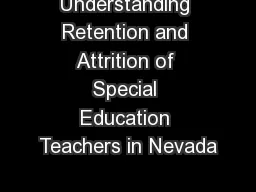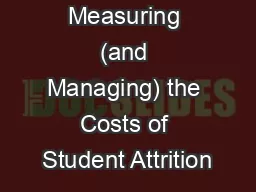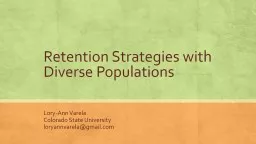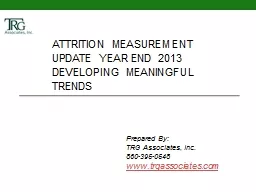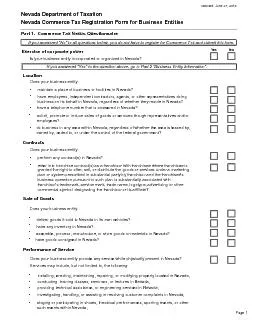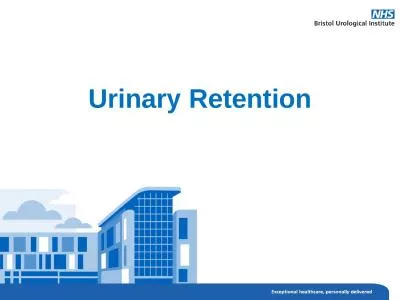PPT-Understanding Retention and Attrition of Special Education Teachers in Nevada
Author : jane-oiler | Published Date : 2018-11-07
Through a Longititudinal Study A Model for Other States Jane Splean Nevada Department of Education jspleandoenvgov Edward Caffarella State University of New York
Presentation Embed Code
Download Presentation
Download Presentation The PPT/PDF document "Understanding Retention and Attrition of..." is the property of its rightful owner. Permission is granted to download and print the materials on this website for personal, non-commercial use only, and to display it on your personal computer provided you do not modify the materials and that you retain all copyright notices contained in the materials. By downloading content from our website, you accept the terms of this agreement.
Understanding Retention and Attrition of Special Education Teachers in Nevada: Transcript
Download Rules Of Document
"Understanding Retention and Attrition of Special Education Teachers in Nevada"The content belongs to its owner. You may download and print it for personal use, without modification, and keep all copyright notices. By downloading, you agree to these terms.
Related Documents

